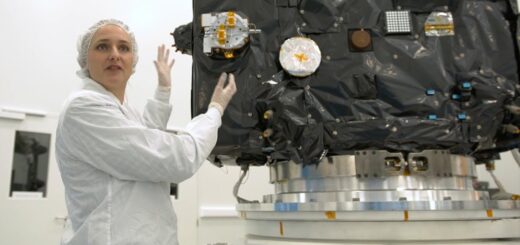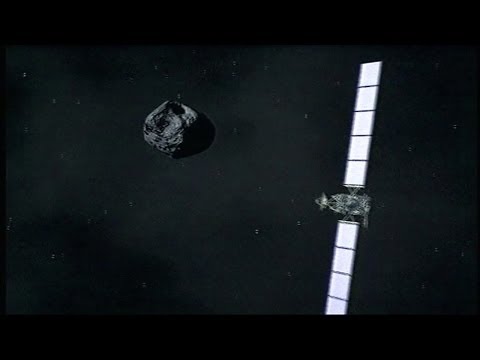The European Space Agency Explained
The European Space Agency:When people are asked to name the “big players”of the space industry their minds usuallygo to the United States and Russia, and maybe,as of more recently, China. But believe it or not: the European SpaceAgency, ESA, spends almost twice as much moneyevery year as it’s Russian counterpart whoin turn spends more than twice as much asthe Chinese. This means that ESA is second only to NASAwhen it comes to money spent on space. Yet no European astronaut has ever steppedon the moon, and ESA has never had their ownspace stations or space shuttles. In fact, ESA has never actually sent a humaninto space. So what exactly is the European Space Agency,and what have they been doing with all thatmoney?Well, like many things in Europe, ESA is verycomplicated. However, greatly simplified: It’s an organisationin which a bunch of countries collaboratewhile also having their own national spaceagencies. Sort of like a European Union of Space Travel. The ”European Space Research Organisation”,as it was called then, was founded just asthe space race was heating up. However, as opposed to its contemporaries,the ESRO’s purpose was never to “boldlygo where no man had gone before. ”They decided instead to focus on unmannedspaceflight. But in the beginning the budget was low, sothey started out small:While the US and the USSR raced to the moon,The Europeans were launching rockets thatjust barely touched the edge of space, collectingscientific data before falling back to earth. Because of this, the first Europeans in Spacewere not astronauts. . but cosmonauts. However, the ESRO eventually decided thatthey couldn’t be a space agency withoutastronauts forever, so they struck a dealwith NASA:The Europeans would build an attachable labunit for the brand new space shuttle, In return,some ESA astronauts would get to tag alonginto space. European astronauts ended up being an occasionalpart of the Space Shuttle program, from thebeginning to the end. However, even as they collaborated with NASAthe ESRO did not believe that the Space Shuttlewould be capable of filling the space-launchingneeds of every government and organisationin the world, as the Americans promised. In 1975 The ESRO was merged with another agency,the European Launcher Development Organisation,and was given its current name. This also meant that they inherited a missionto develop an independent European launchsystem. The rocket that resulted became known as theAriane, and it turned out pretty well. Ariane had the benefit of being capable ofsending two satellites into orbit at once,making “two for one” deals possible andsaving a lot of money. Another great advantage ESA had was it’samazing space port. Guiana Space Center lies just north of theequator, an ideal position for putting satellitesinto orbit, as many of them are supposed togo around the earth’s equator. The Europeans decided to go with the moreclassic kind of rocket and it paid off:The American space shuttle, though undoubtedlyextremely cool, never quite became the cheapspace-trucking service it was supposed tobe, and Ariane would end up being a betteroption if you wanted to get your payload intospace for a good price. The day-to-day launch operations of the Arianewere handed over to a subsidiary company calledArianespace, who became the first commerciallaunch company, although it was owned by governments. They would go on to lead the commercial launchmarket until being blown out of the waterby SpaceX. But for now, with astronauts in space anda shiny new rocket ready for launch, ESA turnedagain to its original purpose:Since then they have, among other things:Flown by comets, catalogued stars, found tonsof exoplanets, orbited and studied Mars, Venus,the moon and the sun, and landed on Saturn’smoon Titan. They’ve measured all sorts of gamma raysand magnetic fields and worked with NASA ontons of projects including the famous HubbleSpace Telescope. In one of their more “high profile” missionsthey bounced a probe around the solar systemfor a decade performing advanced gravity-assistmanoeuvres before landing it on comet. . . and the future will be no less exciting,over the next few years ESA plans to:Study Dark Matter, look for more exoplanets,orbit mercury with two probes at once, landa rover on Mars, look for life on Jupitersicy moons, and launch the successor to Hubble,the James Webb Space Telescope, which it alsohelped build. In short, ESA have been, and will continueto be, a frontrunner of the unmanned spaceexploration scene. Along the way there have occasionally beenplans for a real European manned spaceflightprogram. For a while, “the Columbus Program” promiseda European space station travelled to by asmall space shuttle called the “Hermes”. The program was eventually cancelled but partof the proposed space station became the Columbuslab that is now a part of the InternationalSpace Station. To which, nowadays, ESA astronauts travelall the time. Although, like all the rest of them, theyride Russian Rockets. Last but not least, perhaps the biggest contributionESA has made to mankind, and where most ofits budget goes to nowadays, is earth science. A lot of what we know about our planet andit’s environment comes from the countlessESA satellites that have been, metaphorically,picking apart the earth for decades. That kind of mission doesn’t bring you theglory that raising a flag on the moon or constructinga billion dollar space station does. However they’re important all the same. ESA has always been more than happy to takethe backseat in the human spaceflight contestand fly their awesome probes and satellitesunder the worlds radar.













